
SURF SCENE, USA
[caption id="attachment_310149" align="alignnone" width="778"] 34-year-old Ben Graeff, better known as Ben Gravy, is one of New Jersey's most famous surfers. Photo: Dave Moser[/caption]
Maybe you’ve seen someone trying to ride waves on a summer afternoon at the Shore, attempting to stand on small, poorly formed Atlantic chop. You might get the impression that real surfing only happens in Hawaii or California. But you didn’t witness an October day with a hurricane offshore, or the frosty barrels from a February blizzard, or even a warm August morning with perfect little peeling waves. Very few Jerseyans know our state has a thriving surf scene. “I think that the average waves in New Jersey aren’t as good as the average waves in California or Florida. And a lot of the time our best conditions are in the off season or very early in the morning, so the general beach-going public doesn’t see it,” says surf industry veteran Kevin Morris, the buyer and manager of Heritage Surf in Margate and a surfer for 43 years. “But when our waves get good, they are world-class. And they can be very technical and powerful.” Read more here. —Jon Coen
34-year-old Ben Graeff, better known as Ben Gravy, is one of New Jersey's most famous surfers. Photo: Dave Moser[/caption]
Maybe you’ve seen someone trying to ride waves on a summer afternoon at the Shore, attempting to stand on small, poorly formed Atlantic chop. You might get the impression that real surfing only happens in Hawaii or California. But you didn’t witness an October day with a hurricane offshore, or the frosty barrels from a February blizzard, or even a warm August morning with perfect little peeling waves. Very few Jerseyans know our state has a thriving surf scene. “I think that the average waves in New Jersey aren’t as good as the average waves in California or Florida. And a lot of the time our best conditions are in the off season or very early in the morning, so the general beach-going public doesn’t see it,” says surf industry veteran Kevin Morris, the buyer and manager of Heritage Surf in Margate and a surfer for 43 years. “But when our waves get good, they are world-class. And they can be very technical and powerful.” Read more here. —Jon Coen
BY DESIGN
Dating from 1853, Llewellyn Park in West Orange is America’s first planned residential community. Comprising nearly 422 acres, the suburban park has a mountainside setting with the ambience of a country estate, with wooded, communal grounds. Today’s residents, including famous names like Whoopi Goldberg, continue to enjoy easy access to Manhattan. Llewellyn Park established the concept of a commuter suburb. —Fred B. AdelsonWHO'S NEXT DOOR?
They’re creepy and they’re kooky, they’re altogether ooky—and have Jersey roots. America’s oddest brood, the Addams Family, is the brainchild of Westfield cartoonist Charles Addams, whose 1940s and ’50s illustrations for the New Yorker became the basis for movies, a Broadway musical and TV shows, including the 2022 Netflix hit Wednesday, where eagle-eyed viewers spied Jersey plates on the family’s hearse. (Past Addams Family works have had New Jersey mentions, too.) Every October, Westfield hosts AddamsFest, with events like a masquerade ball, cemetery tours and a house-decorating contest. —Julie Gordon[RELATED: New Jersey’s Famous Firsts: Baseball Games, M&M’s and More]
HOME GROWN
Abraham Browning of Camden, the former state attorney general, gave the Garden State its nickname. While speaking at the Philadelphia Centennial exhibition on New Jersey Day in 1876, Browning coined the phrase while comparing the state to an immense barrel filled with good things to eat—that are grabbed by New Yorkers at one end and Pennsylvanians at the other. The name stuck. In fact, food and agriculture are the state’s third largest industries. As of 2017, more than 10,000 farms generated over $1 billion in cash receipts from more than 100 different crops. While the state is known for its tomatoes, its most valuable crops are blueberries and cranberries, followed by apples, peaches and strawberries. Salem County has the most farmland in the state, with Hunterdon and Burlington counties close behind. —Jacqueline MrozOPEN SPACE
If you’ve ever driven down the New Jersey Turnpike, it may be hard to believe that this state has more undeveloped than developed land. As of 2019, around 53 percent of the Garden State’s total land area—some 2.48 million acres—was protected from development, according to New Jersey Future, a nonprofit organization that promotes sensible and equitable development in the state. —JMCLOTHING OPTIONAL
If you’re looking to partake in the nudist or naturist lifestyle, you may be surprised to learn that the state is home to quite a few nudist clubs. The Rock Lodge Club in Stockholm is one of the oldest nudist clubs in the country, founded in 1932. The Goodland Country Club and Spa in Hackettstown and Sky Farm in Basking Ridge have also been around for decades, located on large grounds with multiple recreational activities for members. —Thomas NeiraNOT MOUNT VESUVIUS
But, yup, there is a volcano located in New Jersey. Don’t worry—experts estimate that Rutan Hill, in Sussex County’s Beemerville, has been dormant for hundreds of millions of years. Scientists say that erosion following its last eruptions destroyed its volcanic cone, obscuring the typically pointed mound. Though it is located on private, residential property, its rocky remnants are said to be visible from hikes in High Point State Park (which is the highest point in New Jersey). —Jennifer FinnOUR SUMMER OF LOVE
[caption id="attachment_310153" align="alignnone" width="778"]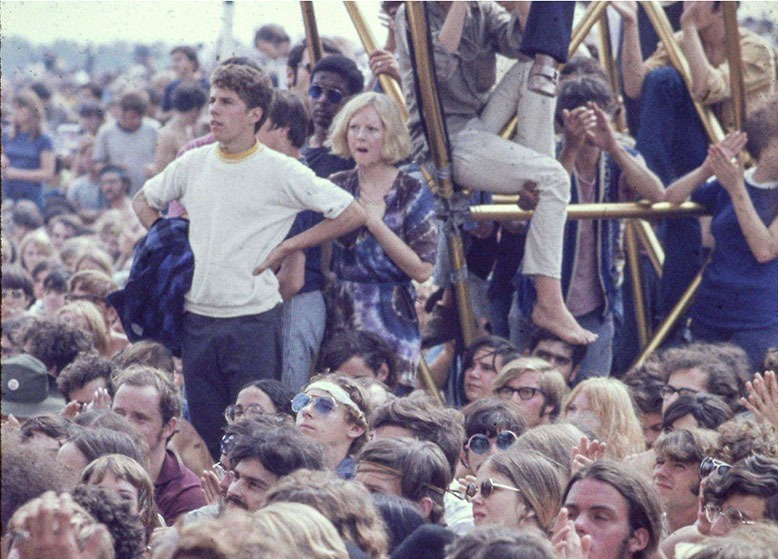 Two weeks before Woodstock, Jersey had its own massive festival in Atlantic City. Photo: David Weitz[/caption]
Woodstock wasn’t the only three-day music festival during August of 1969. The Atlantic City Pop Festival, which was held two weeks before music fans camped out at Max Yasgur’s farm, somehow slipped through the cracks of history despite hosting an incredible array of talent. Janis Joplin, the Byrds, Creedence Clearwater Revival, Jefferson Airplane and B.B. King were just some of the legends who performed August 1-3 at the Atlantic City Racecourse in Hamilton Township for more than 100,000 fans. A ticket for the entire weekend was $15, and it was $6 per day. Read more here. —Ed Condran
Two weeks before Woodstock, Jersey had its own massive festival in Atlantic City. Photo: David Weitz[/caption]
Woodstock wasn’t the only three-day music festival during August of 1969. The Atlantic City Pop Festival, which was held two weeks before music fans camped out at Max Yasgur’s farm, somehow slipped through the cracks of history despite hosting an incredible array of talent. Janis Joplin, the Byrds, Creedence Clearwater Revival, Jefferson Airplane and B.B. King were just some of the legends who performed August 1-3 at the Atlantic City Racecourse in Hamilton Township for more than 100,000 fans. A ticket for the entire weekend was $15, and it was $6 per day. Read more here. —Ed Condran
A PIECE OF THE WEST
Picture this: You pile into open-air bleachers on a Saturday night to watch bull riding, barrel racing and steer wrestling. Is this Texas? Wyoming? No! It’s Cowtown Rodeo right here in New Jersey—Pilestown to be precise. Even more surprising, Cowtown, which has been in operation since 1929, is believed to be the longest-running professional rodeo in the United States. One of NJM's 52 Things You Must Do in New Jersey, Cowtown is open Saturdays from Memorial Day weekend through September, as well as for special events, so head there this summer. —Olivia BardoINDIA TO THE SHORE
Some of the earliest Asian American immigrants to New Jersey came from the Bengal region of India in the 1880s. Many settled in Shore destinations such as Asbury Park and Long Branch, where they sold handicrafts to tourists. At the time, there was a craze for trinkets and other goods from India. —JM[RELATED: Some of America’s Favorite Toy Brands Originated in New Jersey]
WHITMAN'S LAST DAYS
Walt Whitman lived in Camden for the last eight years of his life but spent the summers of 1876-1881 at the farm of his friends, the Staffords. Sometimes he slept in an upstairs bedroom of the farmhouse, at other times in an outbuilding. He spent his days exploring the woods, taking mud baths in the creek, and, not surprisingly, writing. The Whitman Stafford House is now a museum honoring the poet. In 1891, incorrectly assuming that Whitman was dead, workmen constructing the tomb the poet had designed for himself in Camden’s Harleigh Cemetery carved that year above the tomb entrance. Upon discovering the error, Whitman had the number 1 chiseled away. The 1 was replaced with a 2 the following year (1892) after Whitman really did die. Traces of the error can still be seen today. —Barbara LeapLANDMARKING A LEGACY
[caption id="attachment_310160" align="alignnone" width="778"]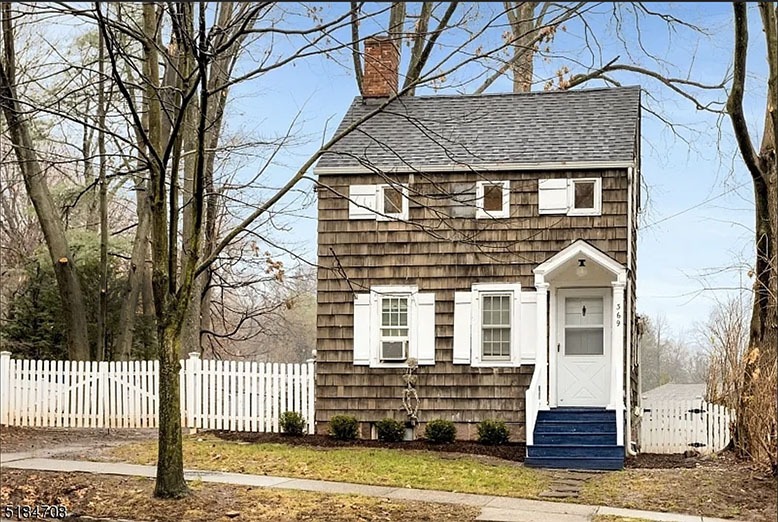 The Howe House on Claremont Avenue in Montclair is an important part of Garden State history. Photo: Courtesy of Zillow[/caption]
In 1831, James Howe was deeded 6 acres and a small house on Claremont Avenue in Montclair. That house still stands. For many years, the worn clapboard house was known locally as the slave house. James Howe was owned by Nathaniel Crane. A member of one of the town’s founding families, Crane left the property to Howe (rumored to be his son) upon his death. Read more here. —Deborah P. Carter
The Howe House on Claremont Avenue in Montclair is an important part of Garden State history. Photo: Courtesy of Zillow[/caption]
In 1831, James Howe was deeded 6 acres and a small house on Claremont Avenue in Montclair. That house still stands. For many years, the worn clapboard house was known locally as the slave house. James Howe was owned by Nathaniel Crane. A member of one of the town’s founding families, Crane left the property to Howe (rumored to be his son) upon his death. Read more here. —Deborah P. Carter
OUR UNDERWORLD
[caption id="attachment_275398" align="alignnone" width="778"] Gregory D. Lattanzi, New Jersey’s state archaeologist, says there’s evidence of humans in the region dating back 11,000 years. Photo: Rebecca McAlpin[/caption]
The majority of drivers speeding past Exit 15X on the New Jersey Turnpike have no idea they’re rolling over a fascinating archaeological site, let alone one that highlights a unique—if macabre—slice of history. When the Turnpike Authority built the interchange in 2002, giving drivers access to the Secaucus Junction train station, dozens of archaeologists were called in to join the massive effort because of what was located deep below: hundreds of bodies from a graveyard dating back to the 1880s. “If you want to go all Sopranos about it, there are bodies everywhere.…Hey, it’s Jersey!” Gregory D. Lattanzi, who is New Jersey’s state archaeologist, told New Jersey Monthly in 2021. “But seriously, you’re always walking or driving on streets built on land used by humans for thousands of years.” Read more here. —Sharon M. Goldman
Gregory D. Lattanzi, New Jersey’s state archaeologist, says there’s evidence of humans in the region dating back 11,000 years. Photo: Rebecca McAlpin[/caption]
The majority of drivers speeding past Exit 15X on the New Jersey Turnpike have no idea they’re rolling over a fascinating archaeological site, let alone one that highlights a unique—if macabre—slice of history. When the Turnpike Authority built the interchange in 2002, giving drivers access to the Secaucus Junction train station, dozens of archaeologists were called in to join the massive effort because of what was located deep below: hundreds of bodies from a graveyard dating back to the 1880s. “If you want to go all Sopranos about it, there are bodies everywhere.…Hey, it’s Jersey!” Gregory D. Lattanzi, who is New Jersey’s state archaeologist, told New Jersey Monthly in 2021. “But seriously, you’re always walking or driving on streets built on land used by humans for thousands of years.” Read more here. —Sharon M. Goldman
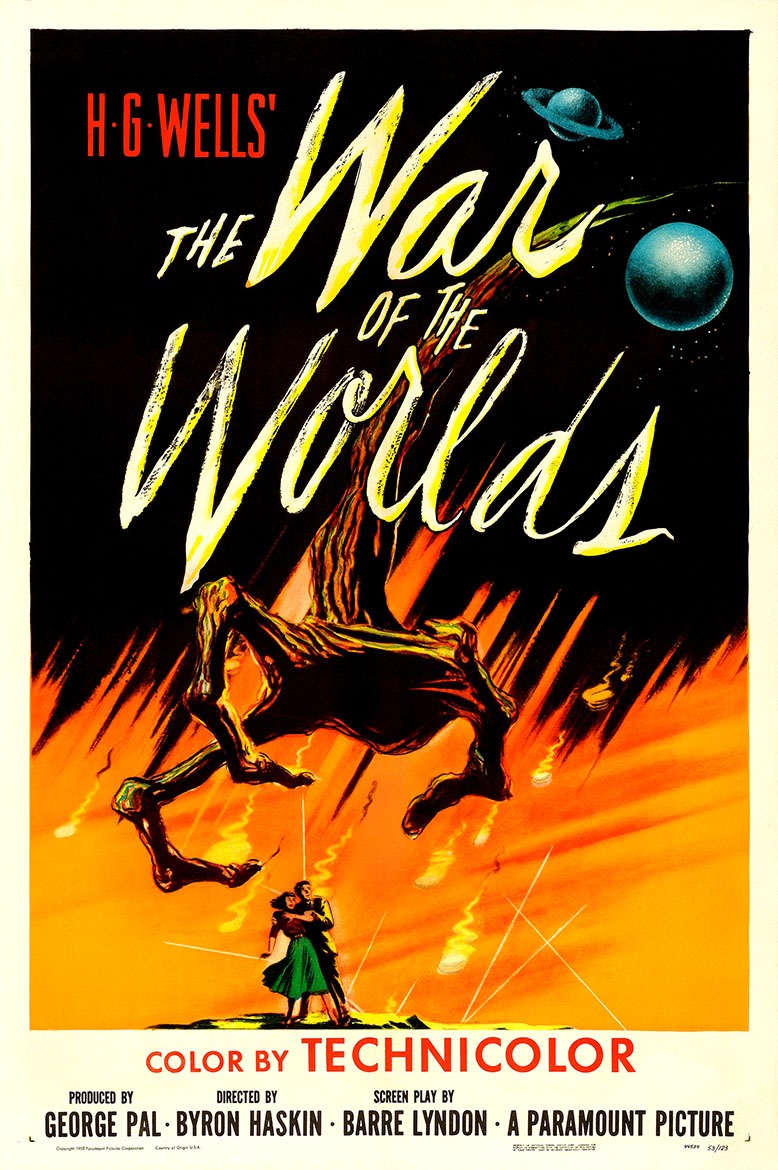 PANIC IN JERSEY
PANIC IN JERSEY
Everyone associates the infamous 1938 War of the Worlds radio broadcast with aliens and sheer panic. But the New Jersey connection to the event is often forgotten. Orson Welles’s radio drama, based on H.G. Wells’s sci-fi novel of the same name, caused alarm when radio listeners heard that Martians had invaded Grovers Mill, a small town located in Mercer County, and thought the fictional story was a real news report. Since the 1980s, a large, bronze monument to the broadcast has stood in Grovers Mill. —JG
HISTORIC REMAINS
The Garden State is home to more than 600 battlegrounds, skirmishes and graveyard sites from the Revolutionary War—more than any other state. George Washinton’s famous crossing of the Delaware River occurred as the Continental Army traveled from Pennsylvania to Mercer County, leading to the Ten Crucial Days of important victories for Washington and his troops in Princeton, Trenton and Assunpink Creek. Washington also set up headquarters in Morristown, which history buffs can still visit today. —TNPILE O’ PASTA
A big batch of pasta in New Jersey is no surprise at all. But how about 500 pounds of the starchy stuff mysteriously appearing in the woods? Now that’s unexpected! In late April, a massive amount of spaghetti, elbow macaroni and ziti was spotted (and photographed) in the Middlesex County town of Old Bridge, causing social media users to run amok with theories as to how and why it ended up there. The answer? According to reports, a local man cleaning out his late mother’s home found a stockpile of pasta and, instead of donating or trashing it, dumped it in the woods. —JGNJ FAULT LINE
While not as common as in other states, New Jersey still gets its fair share of earthquakes. This is due to the Ramapo Fault, the longest fault in the northeastern United States. It runs from Pennsylvania to New York, cutting through Hunterdon, Somerset, Morris, Passaic and Bergen counties along the way. There is typically at least one earthquake in the state each year, ranging between 1.5 and 3 magnitude on the Richter scale. The largest earthquake in state history happened in 1783, believed to have been about a 5.3 magnitude. —TNA JAPANESE ENCLAVE
[caption id="attachment_310167" align="alignnone" width="778"] Masaru Nakawatase, 79, came to Seabrook Farms at three years old. Photo: Dave Moser[/caption]
In 1944, a farm in a quiet corner of South Jersey was looking for more workers to help with its crops. Seabrook Farms, a 57-acre farm located in Cumberland County, was a major supplier of vegetables to the military, but it faced a labor shortage due to World War II. To fill that void, Charles Franklin Seabrook began hiring Japanese Americans who were being held in internment camps during the war. By 1947, nearly 2,700 Japanese Americans were living and working on the site—the largest concentration of Japanese Americans in the country at the time. Masaru Nakawatase, 79, was born in an internment camp in Arizona and came to Seabrook at three years old. He and his family lived in dormitories on the farm property. “The hours were crazy. In the growing season, when the crops were coming in, from June until the end of summer, you had to work 12-hour shifts,” he says. Read more here. —JM
Masaru Nakawatase, 79, came to Seabrook Farms at three years old. Photo: Dave Moser[/caption]
In 1944, a farm in a quiet corner of South Jersey was looking for more workers to help with its crops. Seabrook Farms, a 57-acre farm located in Cumberland County, was a major supplier of vegetables to the military, but it faced a labor shortage due to World War II. To fill that void, Charles Franklin Seabrook began hiring Japanese Americans who were being held in internment camps during the war. By 1947, nearly 2,700 Japanese Americans were living and working on the site—the largest concentration of Japanese Americans in the country at the time. Masaru Nakawatase, 79, was born in an internment camp in Arizona and came to Seabrook at three years old. He and his family lived in dormitories on the farm property. “The hours were crazy. In the growing season, when the crops were coming in, from June until the end of summer, you had to work 12-hour shifts,” he says. Read more here. —JM
SAND GEMS
[caption id="attachment_310156" align="alignnone" width="778"] Cape May diamonds are actually polished, faceted quartz. Photo: Jessica Orlowicz[/caption]
At Cape May’s Sunset Beach, water-tumbled quartz stones sparkle when they are wet, earning the name Cape May diamonds. The stones, which are most easily found by beachcombers after, can be faceted into sparkly gems that can be mounted as jewelry. The Sunset Beach gift shop sells ready-made bracelets, necklaces and more featuring the stones. —DPC
Cape May diamonds are actually polished, faceted quartz. Photo: Jessica Orlowicz[/caption]
At Cape May’s Sunset Beach, water-tumbled quartz stones sparkle when they are wet, earning the name Cape May diamonds. The stones, which are most easily found by beachcombers after, can be faceted into sparkly gems that can be mounted as jewelry. The Sunset Beach gift shop sells ready-made bracelets, necklaces and more featuring the stones. —DPC
CHINESE COMMUNITY
[caption id="attachment_310155" align="alignnone" width="778"]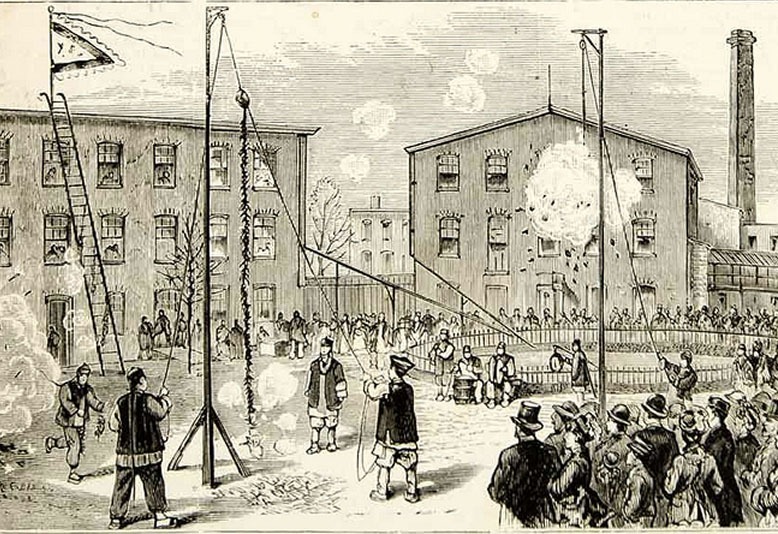 This 1876 etching captures one of Belleville’s earliest Chinese New Year celebrations. Illustration: Courtesy of Belleville Historical Society[/caption]
In 1871, Chinese immigrants to the small town of Belleville, in Essex County, celebrated the Chinese New Year—making it the first celebration of its kind and attracting revelers from across the East Coast. Most of the immigrants, who came to Belleville to escape racial violence on the West Coast, worked at Passaic Steam Laundry. They decided to settle there and were welcomed into the town, creating the first Chinese community in the area. —JM
This 1876 etching captures one of Belleville’s earliest Chinese New Year celebrations. Illustration: Courtesy of Belleville Historical Society[/caption]
In 1871, Chinese immigrants to the small town of Belleville, in Essex County, celebrated the Chinese New Year—making it the first celebration of its kind and attracting revelers from across the East Coast. Most of the immigrants, who came to Belleville to escape racial violence on the West Coast, worked at Passaic Steam Laundry. They decided to settle there and were welcomed into the town, creating the first Chinese community in the area. —JM
BURIED TREASURES?
There are thousands of shipwrecks off the coast of New Jersey just waiting to be explored by certified divers (an activity on NJM's Jersey Shore bucket list). The R.P. Resor, located 120 feet below the surface and 32 miles off Long Beach Island, and the Gulf Trade, which split into two dive sites at Barnegat Inlet, are two examples. Both were oil tankers torpedoed by World War II-era German U-boats. The USS Algol, meanwhile, remains intact beyond Point Pleasant, where it now serves as an artificial reef after sinking in 1991. —Gary PhillipsELLIS ISLAND, NJ
New York isn’t the only state that can claim the historic Ellis Island as its own. In 1998, the U.S. Supreme Court ruled that, while the island’s National Museum of Immigration, located in the hall where 12 million immigrants were processed from 1892 to 1954, is located in New York, most additional buildings are actually part of New Jersey. A nonprofit, Save Ellis Island, is working to stabilize, restore and preserve the Ellis Island Hospital Complex on the Jersey side. —JFNJ, WE DIG IT
One of the world’s first nearly complete dinosaur skeletons was discovered in Haddonfield in 1858. The Hadrosaurus foulkii is named after William Parker Foulke, who excavated the fossils after hearing of others being found—and even given away to friends—by unsuspecting farmer John E. Hopkins 20 years prior. Replica bones cast from Foulke’s finds are on view at Philadelphia’s Academy of Natural Sciences of Drexel University. —JF[RELATED: Haddonfield Home Redesign Inspired by Neighboring Dinosaur Landmark]
DANCE FEVER
Anyone down for a do-si-do? The square dance has been New Jersey’s official state dance since 1983. When local dancers attend events like the National Square Dance Convention, they often don green ensembles as a nod to the Garden State. If you’re interested in joining clubs or classes, consult the Northern New Jersey Square Dancers Association, which was founded in 1958 and is comprised of 13 clubs with hundreds of members. —JFA TOWN COMES TO LIFE
[caption id="attachment_310236" align="alignnone" width="778"]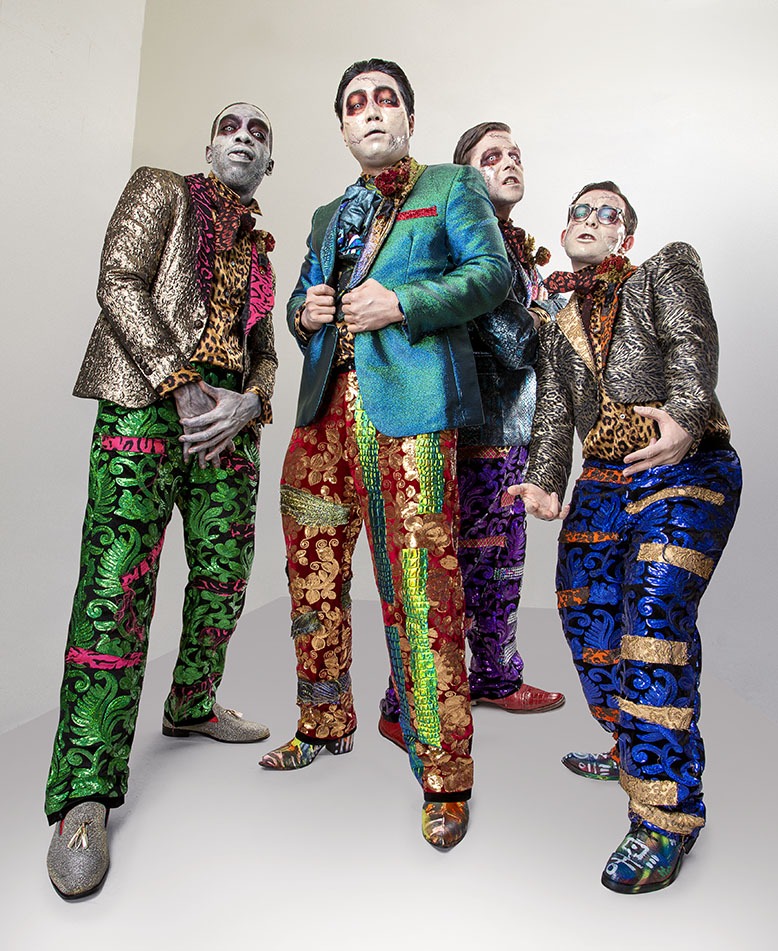 Zombie Wedding filmed in Vineland this past fall. Photo: Courtesy of Zombie Wedding/Jeff Harris[/caption]
Vineland, a small city in Cumberland County—once home to the Progresso soup company and the poultry industry—is on the verge of becoming a filmmaking hub in South Jersey. Greg D’Alessandro, a writer and producer who grew up in Franklin Lakes, has opened a 40,000-square-foot production studio in town. His company, Weekly World News Film (yes, that Weekly World News), filmed its new movie, Zombie Wedding, there this past fall. Zombie Wedding is part of a trilogy, and WWN is also producing a documentary about the newspaper. D’Alessandro also plans to rent the studio to other production companies. “We want people to use the building and help Vineland,” he says, noting his crew spent more than $800,000 in town on hotels, restaurants and bars during a recent filming. They also used residents as crew members and extras. Read more here. —JM
Zombie Wedding filmed in Vineland this past fall. Photo: Courtesy of Zombie Wedding/Jeff Harris[/caption]
Vineland, a small city in Cumberland County—once home to the Progresso soup company and the poultry industry—is on the verge of becoming a filmmaking hub in South Jersey. Greg D’Alessandro, a writer and producer who grew up in Franklin Lakes, has opened a 40,000-square-foot production studio in town. His company, Weekly World News Film (yes, that Weekly World News), filmed its new movie, Zombie Wedding, there this past fall. Zombie Wedding is part of a trilogy, and WWN is also producing a documentary about the newspaper. D’Alessandro also plans to rent the studio to other production companies. “We want people to use the building and help Vineland,” he says, noting his crew spent more than $800,000 in town on hotels, restaurants and bars during a recent filming. They also used residents as crew members and extras. Read more here. —JM
PHONEY FARM
[caption id="attachment_310295" align="alignnone" width="778"]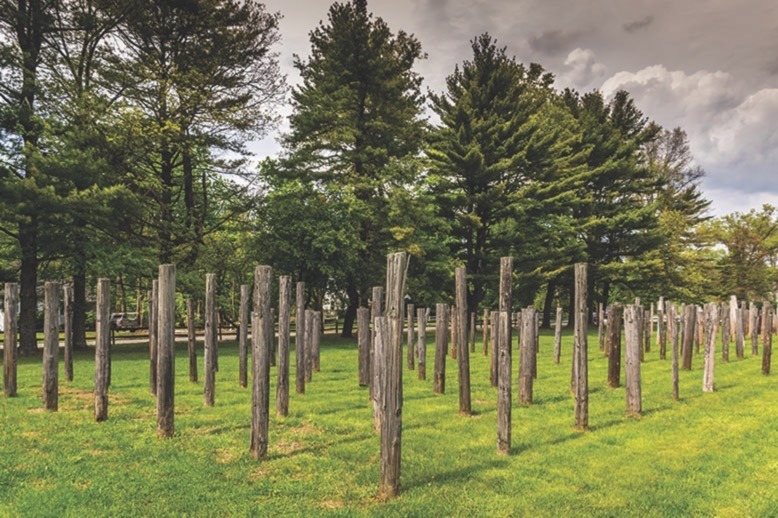 Highlands Ridge Park in Chester was a testing facility for AT&T. Photo: Courtesy of Terence McKenna[/caption]
There is something curious at Chester’s Highlands Ridge Park: nearly 700 abandoned telephone poles standing like trees. For almost 50 years, the park, often called the telephone pole farm, served as a testing facility for AT&T. The story of this unusual park begins in 1928, when 15 acres of farmland were rented by the phone company and set up to test the durability of its telephone poles. By 1930, the company purchased an additional 85 acres to expand their research. The farm was abandoned in the 1980s as advancements discovered at the testing facility made it continued operation obsolete. Read more here. —OB
Highlands Ridge Park in Chester was a testing facility for AT&T. Photo: Courtesy of Terence McKenna[/caption]
There is something curious at Chester’s Highlands Ridge Park: nearly 700 abandoned telephone poles standing like trees. For almost 50 years, the park, often called the telephone pole farm, served as a testing facility for AT&T. The story of this unusual park begins in 1928, when 15 acres of farmland were rented by the phone company and set up to test the durability of its telephone poles. By 1930, the company purchased an additional 85 acres to expand their research. The farm was abandoned in the 1980s as advancements discovered at the testing facility made it continued operation obsolete. Read more here. —OB
ALL ABOUT THE BUZZ
[caption id="attachment_310150" align="alignnone" width="778"]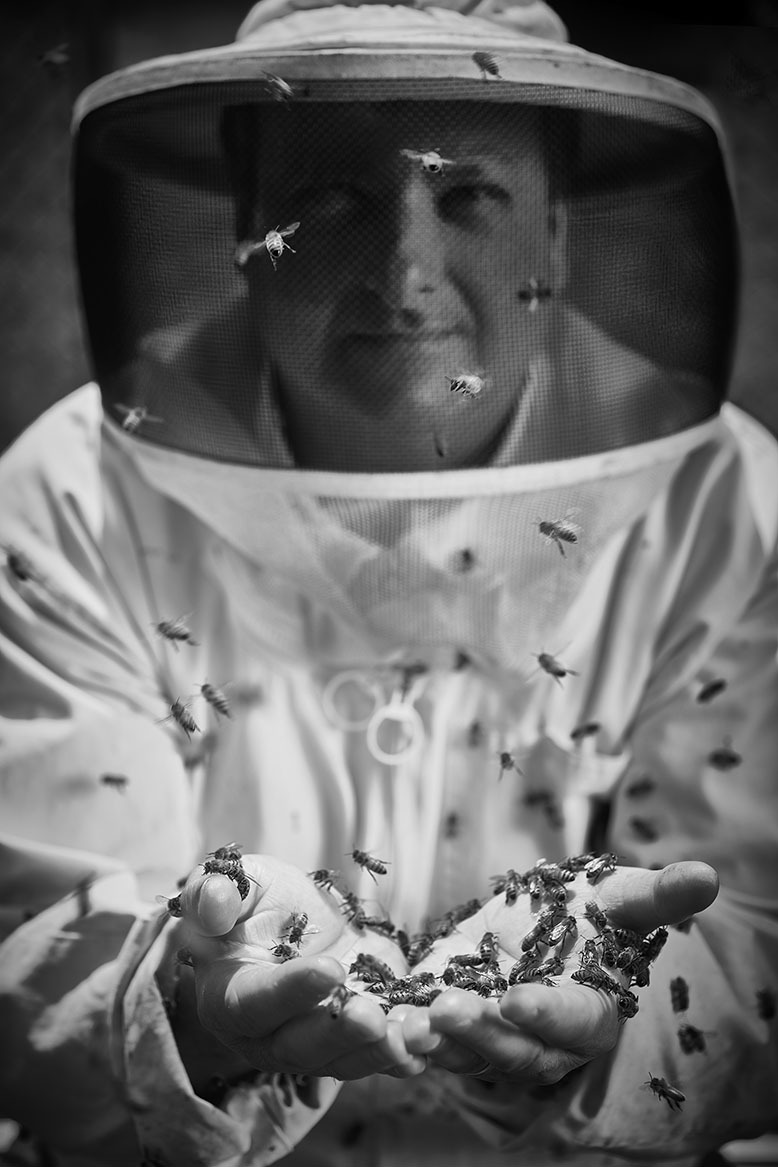 Frank Mortimer says he became a beekeeper out of a pure love for being around stinging insects. Photo: Dave Moser[/caption]
New Jersey is the Garden State, but our state insect since 1974, the honeybee, is crucial for us to keep that moniker. “We have some significant crops that are pollinated by honeybees and rely upon the honeybee to maintain [them], specifically, cranberries and blueberries,” explains Frank Mortimer, certified master beekeeper and former president of the Northeast New Jersey Beekeepers Association. Though Ridgewood-based Mortimer makes and sells honey and other products, from beeswax candles to lip balm and hand cream, his interest stems from a desire to simply “be around stinging insects” and the wildlife they inhabit. Read more here. —JF
Frank Mortimer says he became a beekeeper out of a pure love for being around stinging insects. Photo: Dave Moser[/caption]
New Jersey is the Garden State, but our state insect since 1974, the honeybee, is crucial for us to keep that moniker. “We have some significant crops that are pollinated by honeybees and rely upon the honeybee to maintain [them], specifically, cranberries and blueberries,” explains Frank Mortimer, certified master beekeeper and former president of the Northeast New Jersey Beekeepers Association. Though Ridgewood-based Mortimer makes and sells honey and other products, from beeswax candles to lip balm and hand cream, his interest stems from a desire to simply “be around stinging insects” and the wildlife they inhabit. Read more here. —JF
DRONE SCHOOL
The drone craze burst onto the scene as a mainstream trend in the 2010s, but learning how to fly and operate one can prove very challenging. Luckily, there are a number of organizations in the state dedicated to teaching students of all ages the ins and outs of flying a drone. The first Drone Academy opened in 2015. —TNWE'RE TREE LOVERS
The Tree City USA program recognizes cities and towns across the country that work on planting and taking care of their trees, and awards grants to help maintain and further tree growth. Over 160 municipalities in Jersey have been recognized as Tree Cities USA since the program started in 1976. Paramus and Parsippany lead the way for most years recognized by the program at 46, with Kearny and Morris Plains following closely at 45 each. —OBWATER EVERYWHERE
Jutting into the Atlantic, curving around Delaware Bay and up the Delaware River, South Jersey is surrounded by water, which makes New Jersey flanked by more water than any state except Florida. California has a longer coastline, but is exposed to the sea on only one side. —Eric Levin[RELATED: Iconic Candy Brands Born, Bred and Made in New Jersey]
TRAILBLAZERS
Did you know the Appalachian Trail winds through New Jersey? The 2,190-mile trail, which spans from Maine to Georgia, includes 72 miles of trailway in the northwestern part of the Garden State. Beginner and expert hikers alike can enjoy the trail. Pochuck Boardwalk in Glenwood is a great choice for easy hiking on a scenic pathway. For a bit more of a challenge, give Stairway to Heaven in Vernon a try. The view from the summit makes the scrambles worth it. Whatever your preference, the Appalachian Trail is a great way to escape for a day, and maybe spot Jersey’s state bird, the eastern goldfinch. —OBWOMEN'S RIGHTS
In 1776, New Jersey’s first constitution allowed female property owners to vote (in fact, it allowed all property owners to vote, including African Americans). Sadly, by 1807, that right was revoked, and the right to vote was only granted to free white men. These voting restrictions remained in place until 1920, when the 19th Amendment was ratified, giving white women the right to vote. —DPCMYSTERIOUS DEVIL
The legendary creature known as the Jersey Devil is said to roam the Pine Barrens at night. While variations of the creature’s origin story have been told for over 250 years, the most popular account claims that the creature is the 13th child of a poor woman called Mother Leeds, who gave birth in 1735. The myth holds that the baby transformed into a beast—said to have a horse’s head, wings, hooves and red eyes—flew up the chimney (or out the window, or to the basement) and headed for the marshy parts of the Pine Barrens. People have reported seeing this curious figure in the Pine Barrens after sundown, some say they have even heard the Jersey Devil screeching. —OBNo one knows New Jersey like we do. Sign up for one of our free newsletters here. Want a print magazine mailed to you? Purchase an issue from our online store.
The post We Bet You Didn’t Know These Things About New Jersey appeared first on New Jersey Monthly.

